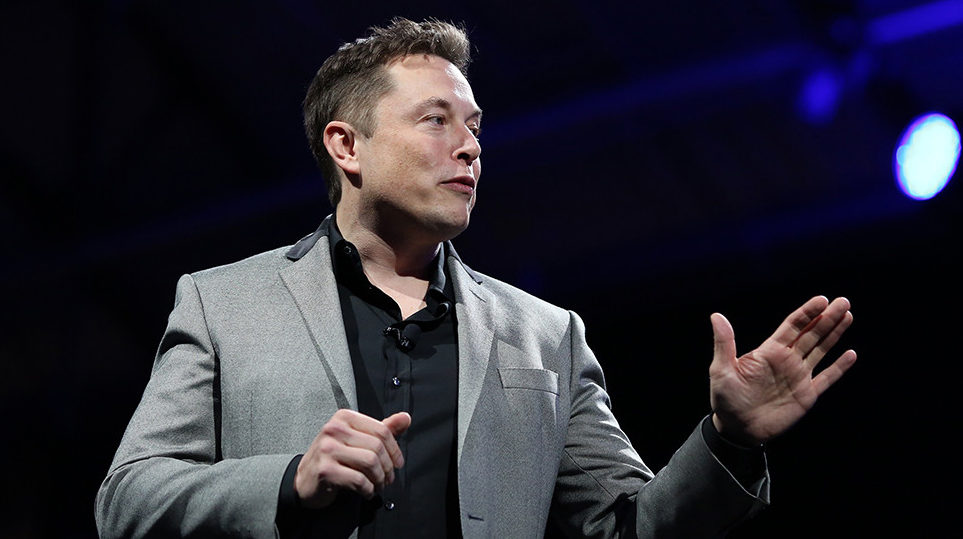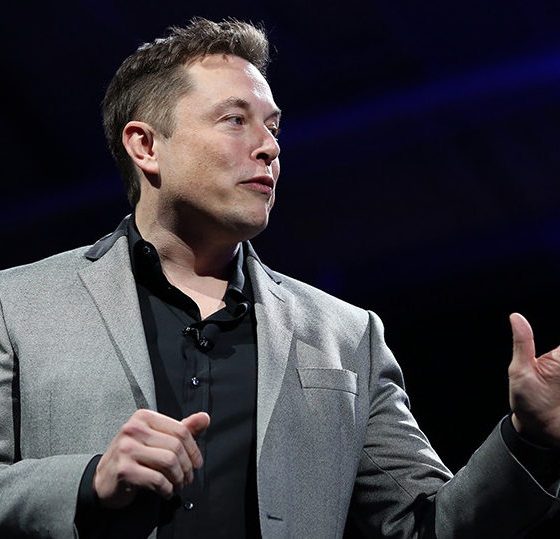

News
Tesla’s Elon Musk hailed as ‘Disruptor of the Year’ in Detroit, but Model 3 misses awards
Tesla might not be a participant in the North American International Auto Show on Monday, but Elon Musk’s presence could still be felt in the event. During the CNET Roadshow Shift Awards, Musk was named as “Disruptor of the Year,” beating out the CEOs of other companies such as McLaren Automotive and Bird, an electric scooter-share startup.
Chris Paukert, executive editor of the auto publication, noted that the Disruptor of the Year award is based on the person who caused the most ripples in the auto industry during the past year. In this sense, there is very little doubt that Musk was the definite choice, considering his well-publicized challenges and successes with the Model 3 ramp, as well as his daring, out-of-the-box strategies that ultimately brought Tesla into the green in Q3.
“This award is all about pushing the industry forward and leaving a lasting impact on the future of the automotive industry. Elon Musk fits that bill to a T. After smoothing out its production process, Tesla once again proved profitable. The Model 3 quickly launched itself to prominence in an already busy segment, and buyers themselves could feel the effects of those launches thanks to its wild Performance variant. Hell, he even made tunnels interesting,” CNET‘s Tim Stevens wrote.

While the auto publication granted Elon Musk an award, though, Tesla’s latest and most disruptive vehicle to date — the Model 3 — was strangely absent from the auto publication’s rankings. CNET Roadshow, for one, awarded the Genesis G70, a car that has received acclaim from critics and consumers alike, as Vehicle of the Year. Finalists for the award were the Jaguar I-Pace and Volvo S60/V60. The award for Cabin Tech of the Year was also granted to Audi’s MMI touch response system, with the finalists being Mercedes-Benz’ MBUX infotainment system and Ram’s Uconnect 12 technology.
That said, Tesla’s technology did make an appearance in the Roadshow Shift Awards’ other categories. Roadshow‘s Driveline Tech of the Year award, for one, was given to Nissan and Infiniti’s variable compression turbo, though finalists included Hyundai’s Kona electric powertrain and Tesla’s all-wheel-drive performance powertrain. Together with GM’s advance trailering system with apps, Tesla’s Navigate on Autopilot update was listed as a finalist in Safest Tech of the Year award as well. Audi’s drive-assistance package, though, ultimately bagged the award for Safety Tech of the Year.
The absence of the Model 3 in the CNET Roadshow Shift Awards is quite notable, considering that the electric sedan has received wide acclaim from professional reviewers, auto veterans like Sandy Munro, and owners alike. Tesla’s UI for its vehicles, which the company develops in-house, is also among the best in the market, with the system at times being compared to Apple’s iOS. As such, it is quite interesting to see Tesla be beaten by legacy auto in areas where it otherwise excels, such as cabin tech.

That said, it’s not like the Tesla Model 3 is being ignored by legacy auto either. Late last month, for example, 30-year auto news veteran and longtime car enthusiast Henry Payne dubbed the Tesla Model 3 as The Detroit News‘ 2018 Car of the Year. This was despite Payne only experiencing the capabilities of a Long Range RWD Model 3, a tamer version of the electric car compared to the range-topping, track-optimized Model 3 Performance. Following the Tesla Model 3 were the Ford Ranger and the Chevy Corvette ZR1, which were listed as the 2nd and 1st runner up for The Detroit News‘ 2018 Car of the Year award.
The past year has been notably impressive for the Model 3. Over 2018, 145,846 Model 3 were sold, despite Tesla being challenged with the electric sedan’s production during Q1 and Q2. With these sales figures, the Model 3 became the United States’ best-selling luxury vehicle, far overtaking its closest rival — the Lexus RX, which sold 111,641 in 2018. Tesla is not done, either, as the company intends to continue the electric sedan’s ramp all the way to 10,000 units per week.
It should be noted that the Model 3 has been showing these impressive numbers despite the vehicle only being available in the United States and Canada. This year, Tesla intends to bring the car to the international stage, starting with Europe and China, both of which represent a potentially lucrative market for the electric sedan. Tesla for one, is reportedly shipping 3,000 Model 3 per week to the European region starting in February. In China, Model 3 reservation holders who have configured their vehicles are expecting deliveries on March or April. By the end of the year, Tesla is set to roll out more affordable versions of the electric sedan to the local Chinese market, thanks to the vehicle production capabilities of Gigafactory 3.

Elon Musk
Starlink passes 9 million active customers just weeks after hitting 8 million
The milestone highlights the accelerating growth of Starlink, which has now been adding over 20,000 new users per day.

SpaceX’s Starlink satellite internet service has continued its rapid global expansion, surpassing 9 million active customers just weeks after crossing the 8 million mark.
The milestone highlights the accelerating growth of Starlink, which has now been adding over 20,000 new users per day.
9 million customers
In a post on X, SpaceX stated that Starlink now serves over 9 million active users across 155 countries, territories, and markets. The company reached 8 million customers in early November, meaning it added roughly 1 million subscribers in under seven weeks, or about 21,275 new users on average per day.
“Starlink is connecting more than 9M active customers with high-speed internet across 155 countries, territories, and many other markets,” Starlink wrote in a post on its official X account. SpaceX President Gwynne Shotwell also celebrated the milestone on X. “A huge thank you to all of our customers and congrats to the Starlink team for such an incredible product,” she wrote.
That growth rate reflects both rising demand for broadband in underserved regions and Starlink’s expanding satellite constellation, which now includes more than 9,000 low-Earth-orbit satellites designed to deliver high-speed, low-latency internet worldwide.
Starlink’s momentum
Starlink’s momentum has been building up. SpaceX reported 4.6 million Starlink customers in December 2024, followed by 7 million by August 2025, and 8 million customers in November. Independent data also suggests Starlink usage is rising sharply, with Cloudflare reporting that global web traffic from Starlink users more than doubled in 2025, as noted in an Insider report.
Starlink’s momentum is increasingly tied to SpaceX’s broader financial outlook. Elon Musk has said the satellite network is “by far” the company’s largest revenue driver, and reports suggest SpaceX may be positioning itself for an initial public offering as soon as next year, with valuations estimated as high as $1.5 trillion. Musk has also suggested in the past that Starlink could have its own IPO in the future.
News
NVIDIA Director of Robotics: Tesla FSD v14 is the first AI to pass the “Physical Turing Test”
After testing FSD v14, Fan stated that his experience with FSD felt magical at first, but it soon started to feel like a routine.

NVIDIA Director of Robotics Jim Fan has praised Tesla’s Full Self-Driving (Supervised) v14 as the first AI to pass what he described as a “Physical Turing Test.”
After testing FSD v14, Fan stated that his experience with FSD felt magical at first, but it soon started to feel like a routine. And just like smartphones today, removing it now would “actively hurt.”
Jim Fan’s hands-on FSD v14 impressions
Fan, a leading researcher in embodied AI who is currently solving Physical AI at NVIDIA and spearheading the company’s Project GR00T initiative, noted that he actually was late to the Tesla game. He was, however, one of the first to try out FSD v14.
“I was very late to own a Tesla but among the earliest to try out FSD v14. It’s perhaps the first time I experience an AI that passes the Physical Turing Test: after a long day at work, you press a button, lay back, and couldn’t tell if a neural net or a human drove you home,” Fan wrote in a post on X.
Fan added: “Despite knowing exactly how robot learning works, I still find it magical watching the steering wheel turn by itself. First it feels surreal, next it becomes routine. Then, like the smartphone, taking it away actively hurts. This is how humanity gets rewired and glued to god-like technologies.”
The Physical Turing Test
The original Turing Test was conceived by Alan Turing in 1950, and it was aimed at determining if a machine could exhibit behavior that is equivalent to or indistinguishable from a human. By focusing on text-based conversations, the original Turing Test set a high bar for natural language processing and machine learning.
This test has been passed by today’s large language models. However, the capability to converse in a humanlike manner is a completely different challenge from performing real-world problem-solving or physical interactions. Thus, Fan introduced the Physical Turing Test, which challenges AI systems to demonstrate intelligence through physical actions.
Based on Fan’s comments, Tesla has demonstrated these intelligent physical actions with FSD v14. Elon Musk agreed with the NVIDIA executive, stating in a post on X that with FSD v14, “you can sense the sentience maturing.” Musk also praised Tesla AI, calling it the best “real-world AI” today.
News
Tesla AI team burns the Christmas midnight oil by releasing FSD v14.2.2.1
The update was released just a day after FSD v14.2.2 started rolling out to customers.

Tesla is burning the midnight oil this Christmas, with the Tesla AI team quietly rolling out Full Self-Driving (Supervised) v14.2.2.1 just a day after FSD v14.2.2 started rolling out to customers.
Tesla owner shares insights on FSD v14.2.2.1
Longtime Tesla owner and FSD tester @BLKMDL3 shared some insights following several drives with FSD v14.2.2.1 in rainy Los Angeles conditions with standing water and faded lane lines. He reported zero steering hesitation or stutter, confident lane changes, and maneuvers executed with precision that evoked the performance of Tesla’s driverless Robotaxis in Austin.
Parking performance impressed, with most spots nailed perfectly, including tight, sharp turns, in single attempts without shaky steering. One minor offset happened only due to another vehicle that was parked over the line, which FSD accommodated by a few extra inches. In rain that typically erases road markings, FSD visualized lanes and turn lines better than humans, positioning itself flawlessly when entering new streets as well.
“Took it up a dark, wet, and twisty canyon road up and down the hill tonight and it went very well as to be expected. Stayed centered in the lane, kept speed well and gives a confidence inspiring steering feel where it handles these curvy roads better than the majority of human drivers,” the Tesla owner wrote in a post on X.
Tesla’s FSD v14.2.2 update
Just a day before FSD v14.2.2.1’s release, Tesla rolled out FSD v14.2.2, which was focused on smoother real-world performance, better obstacle awareness, and precise end-of-trip routing. According to the update’s release notes, FSD v14.2.2 upgrades the vision encoder neural network with higher resolution features, enhancing detection of emergency vehicles, road obstacles, and human gestures.
New Arrival Options also allowed users to select preferred drop-off styles, such as Parking Lot, Street, Driveway, Parking Garage, or Curbside, with the navigation pin automatically adjusting to the ideal spot. Other refinements include pulling over for emergency vehicles, real-time vision-based detours for blocked roads, improved gate and debris handling, and Speed Profiles for customized driving styles.








